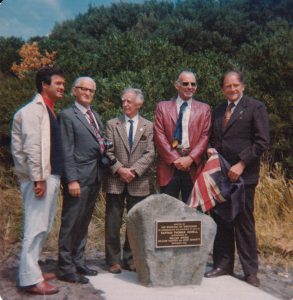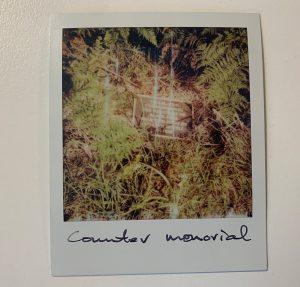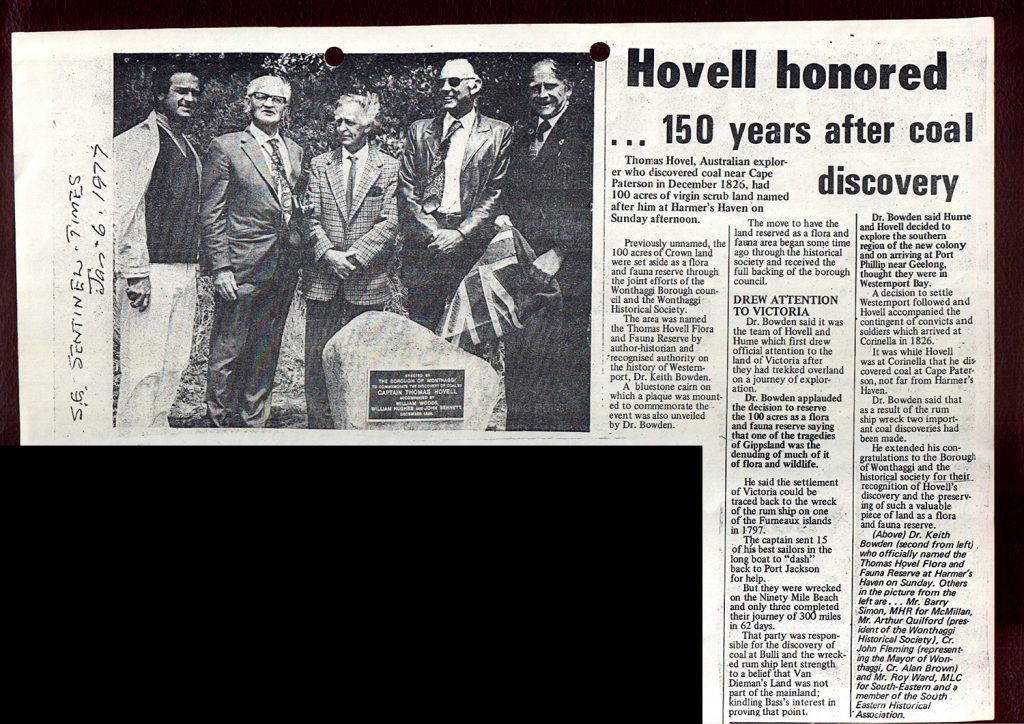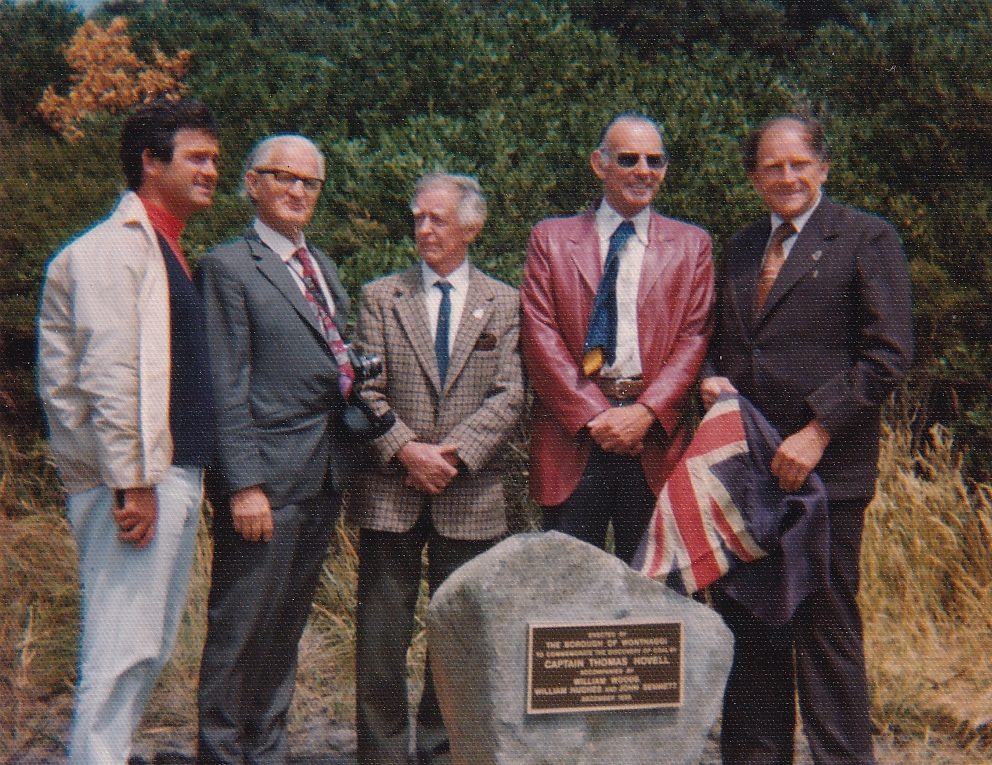Wreck Beach’s Counter Monument

There's this historical marker at Wreck Beach which has a couple of quirky little anecdotes. It’s the weathered bluestone cairn that can still be seen on the verge of the beach carpark but it’s also an uproarious memorial to accidental misadventure.
That historical signpost, which could be described as a 'counter memorial'[1], started its existence as a commemorative monument to the exploits of a colonial exploration, namely the ‘discovery’ of black coal in there in 1826.
My grandfather – Arthur Quilford – was amongst a group of local councilors and history aficionados who advocated for its placement in 1977. The group had a substantial brass plaque and cairn commissioned then proudly assembled for the unveiling. “Hovell honoured… 150 years after coal discovery” the Sentinel Times (06/01/1977) headline proclaimed. “Thomas Hovel, Australian who discovered coal near Cape Paterson in December 1826, had 100 acres of virgin scrub land named him at Harmer’s Haven on Sunday afternoon,” it went on to report.
 It wasn’t until after the unveiling (and the subsequent report) that they realised that the plaque the cited the wrong name (his name was Thomas Howell, not William).
It wasn’t until after the unveiling (and the subsequent report) that they realised that the plaque the cited the wrong name (his name was Thomas Howell, not William).
My uncle and aunt John and Rhonda tell a funny yarn about the shambles that ensued when the group realised the mistake they’d made. They had the plaque re-cast immediate only for it to be jimmied a few years later. Then, for the next decade or so the scrub slowly set about reclaiming that hilariously parochial monument to colonial endeavour.
[Audio: John and Rhonda Quilford recount the moment the local history buffs realise they had the wrong name cast for the plaque commemorating the 'discovery' of coal in 1826.]
The monument has been reinvigorated recently. Some inventive soul went and reimagined the stone as a tribute to the wreck of The Artisan. They went and painted the name and date of the wreck on the side of the cairn by hand. The only problem was that they somehow managed to get the date wrong. The monumental curse continues.

Footnotes
[1] James E. Young used the term 'counter-monuments' in his Harvard Design Magazine essay 'Memory and Counter Memory' (1999) when describing the works of German artists dealing with the memory of the Holocaust. According to Young, anti-monumentalism stems from “a deep distrust of monumental forms in light of their systematic exploitation by the Nazis, and a profound desire to distinguish their generation from that of the killers through memory.”
Young suggests counter-monuments can challenge the "very premise of the monument". In doing so, they undermine "the tendency to displace the past they would have us contemplate" as well as "the authoritarian propensity in monumental spaces that reduces viewers to passive spectators".
